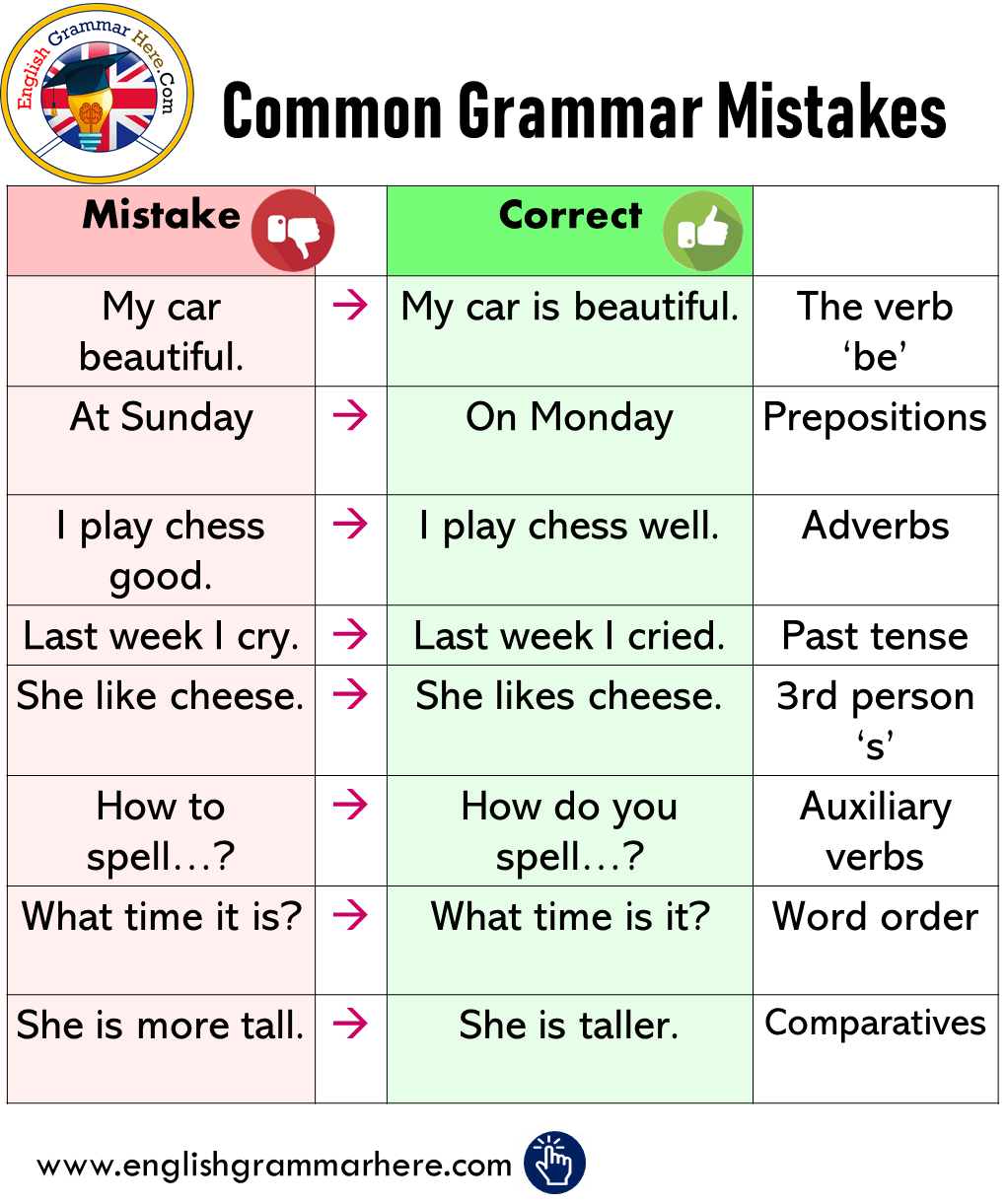Grammar mistakes are a common occurrence in writing, whether it be in emails, essays, or social media posts. These errors can detract from the clarity and professionalism of your writing. By being aware of some of the most common grammar mistakes, you can improve the quality of your writing and communicate more effectively.
One common mistake is the misuse of “your” and “you’re.” “Your” is a possessive pronoun, while “you’re” is a contraction of “you are.” For example, “Your book is on the table” is correct, while “You’re going to love this book” uses the contraction “you’re” correctly.
Another common mistake is the confusion between “its” and “it’s.” “Its” is a possessive pronoun, while “it’s” is a contraction of “it is” or “it has.” For instance, “The cat chased its tail” uses the possessive pronoun “its,” while “It’s raining outside” correctly uses the contraction “it’s.”
Subject-verb agreement errors are also prevalent in writing. This mistake occurs when the subject and verb in a sentence do not agree in number. For example, saying “The dog barks loudly” is correct because “dog” is singular and “barks” is the singular form of the verb. However, saying “The dog bark loudly” would be incorrect because the subject and verb do not agree in number.
Misplacing modifiers is another common grammar mistake. Modifiers should be placed next to the word they are modifying to avoid confusion. For example, saying “I only ate pizza for dinner” implies that pizza was the only thing consumed for dinner. However, saying “I ate only pizza for dinner” clarifies that pizza was the only food eaten.
Lastly, incorrect comma usage can lead to misunderstandings in writing. A common mistake is the misuse of commas in compound sentences. For example, saying “I went to the store, and bought some milk” is incorrect because there should not be a comma before “and.” The correct sentence would be “I went to the store and bought some milk.”
In conclusion, being mindful of common grammar mistakes can help improve the clarity and professionalism of your writing. By avoiding errors such as misusing “your” and “you’re,” confusing “its” and “it’s,” ensuring subject-verb agreement, correctly placing modifiers, and using commas properly, you can enhance the quality of your written communication.
